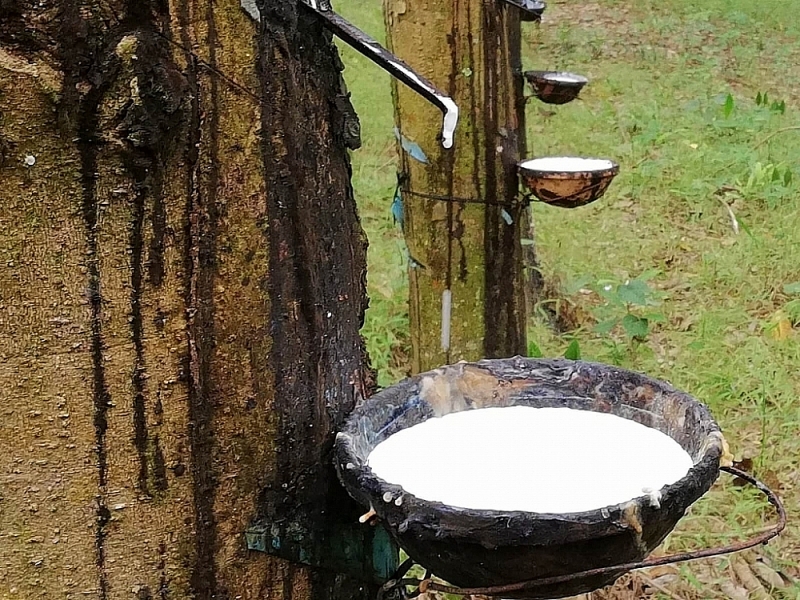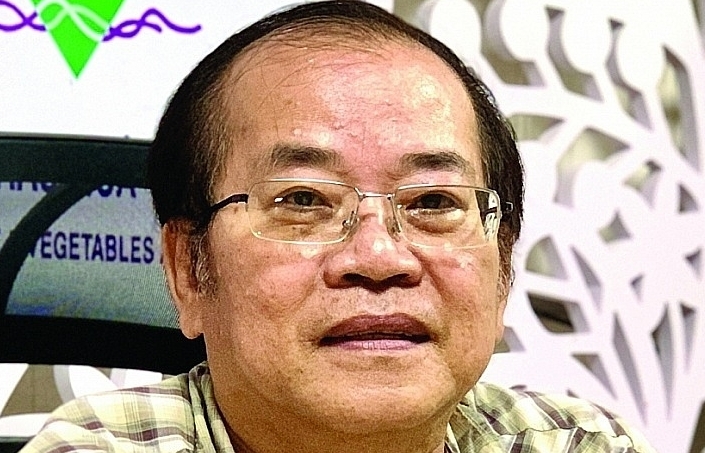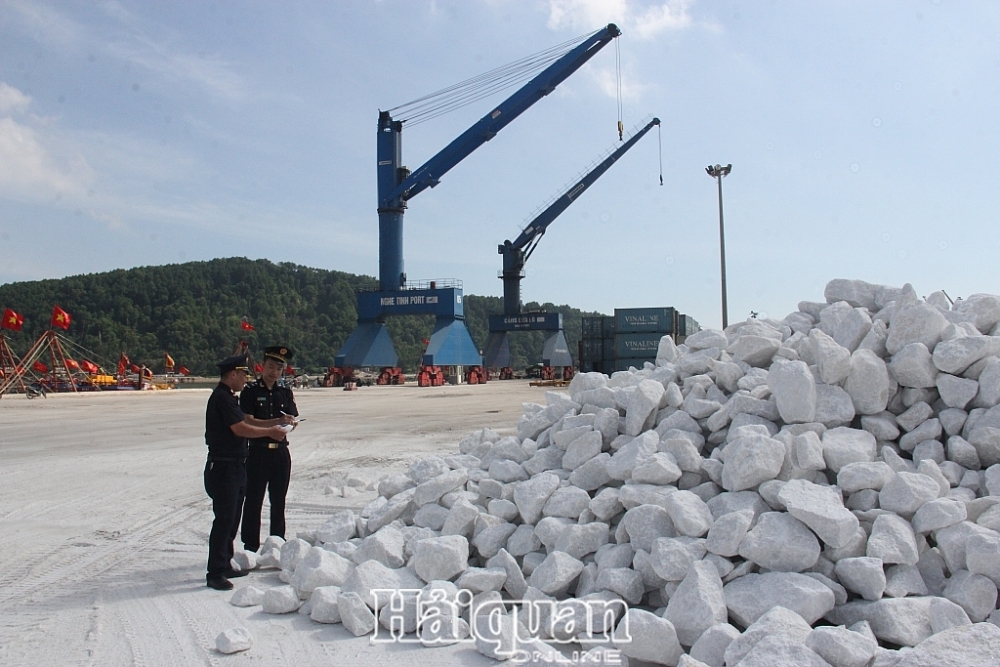The rubber industry needs a long-term plan for more sustainable development
| Rubber export to face difficulties toward year-end | |
| Rubber exports hit US$320 million in August | |
| Market trend changes and how to export rubber sustainably? |
 |
| Only 10% of the rubber area has been certified for sustainability. |
Growth in the context of pressure
Talking about the situation of the rubber industry, Tran Ngoc Thuan, Chairman of the Vietnam Rubber Association, said that after the Covid-19 pandemic, geopolitical tensions, trade wars, unpredictable developments in the energy market, and high inflation have completely changed the business landscape.
Besides, the natural rubber market is affected by the decline of the Chinese market, China’s Zero Covid policy, forecasts about slowing global economic growth, and strong increase of the USD.
However, according to the data of the General Department of Customs, Vietnam's rubber exports still recorded an increase of 8.5% in volume and 8.7% in value, reaching 1.62 million tons and US$2.7 billion. According to Thuan, this is an encouraging result in the context that the rubber industry is under a lot of pressure.
The Vietnam Rubber Association expected that by the end of 2022, the export volume of natural rubber would increase when Vietnam’s major markets start to speed up production and stock up for the end of the year.
Vo Hoang An, Vice President and General Secretary of the Vietnam Rubber Association, said that participation in the free trade agreements and strengthening international cooperation has helped Vietnam's rubber industry have more opportunities to attract foreign investment, enjoy preferential tariffs, and penetrate deeply into the global rubber supply chain. Simultaneously, Vietnam can access scientific and technical advances, and grasp market information and progressive trends in the sustainable development of the rubber industry.
However, in the future, the competition between natural rubber producing and exporting countries will become more intense in terms of price, product quality, commercial reputation, and the ability to meet increasingly stringent sustainability standards.
Meanwhile, the structure and types of Vietnam’s natural rubber are still heavily dependent on the consumption market of China and only partially meet the needs of other markets. Therefore, it is difficult for Vietnam to penetrate other large markets such as the US, Japan, and the EU.
Build "Vietnamese rubber" brand in the world market
To enhance the value of Vietnamese rubber products, the Vietnam Rubber Association has actively built the certification mark "Vietnamese Rubber". Currently, this certificate has been protected domestically and in some key export markets such as China, Taiwan, and India.
In the context that the international certification system for sustainable natural rubber has not developed much, "Vietnamese Rubber" will be a reliable certification mark for products that meet the new needs of the market and support the identification of quality and sustainable products. However, according to An, this certification has so far not received synchronous development support from ministries and agencies.
Therefore, the Vietnam Rubber Association wants the Ministry of Agriculture and Rural Development to have supportive policies in promoting, building an image and registering protection in foreign markets for the "Vietnamese Rubber" certification similar to other agricultural products.
Simultaneously, businesses are encouraged to register to develop the "Vietnamese Rubber" certification mark into a national agricultural product brand. The Vietnam Rubber Association also suggested the Ministry of Industry and Trade and the Ministry of Finance, on the basis of functions and tasks, each agency, ministry, and sector, actively create favorable conditions in administrative procedures and open mechanisms for enterprises that are granted the right to use the “Vietnamese rubber” certification mark in production and business activities and export. At the same time, it is necessary to concretize priority criteria in the selection of national brand products.
Deputy Minister of Agriculture and Rural Development Tran Thanh Nam reminded the rubber industry about sustainable development. Accordingly, the area of rubber certified for sustainability is just more than 10% and most of it is owned by units under the Vietnam Rubber Industry Group. Nam suggested that the rubber industry needs to find ways to expand the area of sustainable certification to businesses outside of the Vietnam Rubber Industry Group, especially in the rubber smallholder area.
The rubber industry needs a olutionn so that by 2030, Vietnam's rubber processing will be in the top 10 in the world. Currently, the rate of deeply processed products is only 18-20%. Nam also emphasized that the rubber industry needs a specific legal basis for long-term development.
Specifically, there must be a development orientation to 2030, and a vision to 2045. “Ministries and sectors are always ready to support the rubber industry. The Rubber Association needs to coordinate to develop a specific plan to improve capacity, increase competitiveness, and move towards sustainable development,” said Deputy Minister Tran Thanh Nam.
Vietnam has risen to the third position in terms of output since 2013 and the third in terms of natural rubber exports since 2015. Up to now, Vietnam continues to maintain this position, just behind Thailand and Indonesia with an output of more than 1.27 million tons, accounting for about 9.1% of the world's total natural rubber output. Rubber exports reached nearly two million tons, accounting for 15.6% of the world market share. The average yield of rubber trees in Vietnam reached 1,691 kg/ha, continuing to be the leading nation in large-scale rubber producing countries.
Related News

Complying with regulations of each market for smooth fruit and vegetable exports
13:06 | 09/01/2025 Import-Export

Increasing consumption demand, steel enterprises have many opportunities
07:43 | 31/12/2024 Import-Export

The Middle East: a promising seafood export market for Vietnam
07:43 | 31/12/2024 Import-Export

Export tax rates of 13 commodity codes to increase to 20% from January 1, 2025
13:46 | 28/12/2024 Regulations
Latest News

Việt Nam tightens fruit inspections after warning from China
08:01 | 15/01/2025 Import-Export

Brand building key to elevate Vietnamese fruit and vegetable sector: experts
08:00 | 15/01/2025 Import-Export

Freight transport via China-Việt Nam cross-border trains posts rapid growth
08:01 | 13/01/2025 Import-Export

Vietnamese retail industry expects bright future ahead
06:22 | 11/01/2025 Import-Export
More News

Fruit and vegetable industry aims for $10 billion in exports by 2030
15:12 | 07/01/2025 Import-Export

GDP grows by over 7 per cent, exceeds target for 2024
15:11 | 07/01/2025 Import-Export

Vietnamese pepper: decline in volume, surge in value
15:10 | 07/01/2025 Import-Export

Việt Nam maintains position as RoK’s third largest trading partner
15:09 | 07/01/2025 Import-Export

Greater efforts to be made for stronger cooperation with European-American market
15:08 | 06/01/2025 Import-Export

Leather, footwear industry aims to gain export growth of 10% in 2025
15:06 | 06/01/2025 Import-Export

Grasping the green transformation trend - A survival opportunity for Vietnamese Enterprises
14:53 | 06/01/2025 Import-Export

Việt Nam to complete database of five domestic manufacturing industries in 2026
20:57 | 05/01/2025 Import-Export

Logistics firms optimistic about growth prospects in 2025: Survey
20:54 | 05/01/2025 Import-Export
Your care

Việt Nam tightens fruit inspections after warning from China
08:01 | 15/01/2025 Import-Export

Brand building key to elevate Vietnamese fruit and vegetable sector: experts
08:00 | 15/01/2025 Import-Export

Freight transport via China-Việt Nam cross-border trains posts rapid growth
08:01 | 13/01/2025 Import-Export

Vietnamese retail industry expects bright future ahead
06:22 | 11/01/2025 Import-Export

Complying with regulations of each market for smooth fruit and vegetable exports
13:06 | 09/01/2025 Import-Export
